
Related
As President Obama prepares to send 30,000 more troops to Afghanistan, aid agencies have issued a warning about what they describe as the increasing militarization of humanitarian aid to Afghanistan. Oxfam, CARE International and other groups say humanitarian aid is often being used by the United States and other nations as part of a counterinsurgency strategy and that military plans are dictating how aid is distributed. We speak to Lex Kassenberg, who has overseen CARE International’s efforts in Afghanistan since 2006. [includes rush transcript]
Transcript
JUAN GONZALEZ: As President Obama prepares to send 30,000 more troops to Afghanistan, aid agencies have issued a warning about what they describe as the increasing militarization of humanitarian aid to Afghanistan. Oxfam, CARE International and other groups say humanitarian aid is being used by the United States and other nations as part of a counterinsurgency strategy and that military plans are dictating how aid is distributed.
AMY GOODMAN: To talk more about this, we’re joined by Lex Kassenberg. Since 2006, he’s been the director of CARE International’s efforts in Afghanistan. He’s just back in Washington, DC.
Lex Kassenberg, thank you very much for joining us. Explain exactly what you mean by the militarization of humanitarian aid.
LEX KASSENBERG: Morning, Amy.
Well, what we are really concerned about is that a lot of international agencies, including CARE, have been on the ground in Afghanistan for a long, long time. CARE, for example, was established in 1961 and has been in Afghanistan ever since, except for a period of ten years during the Russian occupation. During that long period of time, we have been able to build up a very good rapport, a very good understanding with the local communities. And historically that has then translated in an acceptance of CARE and other agencies working at the community level and the communities in turn providing us with a good level of safety and security that, even under very difficult circumstances that we’re facing now in Afghanistan, still enables us to, to a greater or lesser extent at least, implement our activities.
The moment that you start bringing in the military and the requirements that agencies like CARE have to be faceted or have to be closely working together with armed units, let me put it that way, because we’re not just talking about the military, we’re also talking about the provincial reconstruction team that often are linked up with agencies like CARE — the moment these armed units visit the communities, our integrity is compromised, and very often the communities also tell us that their integrity is compromised and that they are now open and prone to attacks. And that is a major concern to us. We have the feeling that it is really negatively affecting our work if we are linked with armed units.
JUAN GONZALEZ: Well, for instance, the United States, as I understand it, has directed about $7 billion in civilian and humanitarian aid to Afghanistan. How, precisely, are you saying that this aid is being militarized or used for counterinsurgency purposes?
LEX KASSENBERG: Well, a lot of the assistance that is going to the United States — and that’s a big part also of the aid effectiveness debate — is specifically money that is going, for example, to the military, to provincial reconstruction teams, the private sector, the for-profits. An enormous amount of money is actually spent on the safety and security of these outfits. A for-profit organization, for example, typically goes out to the field in full body armor, flak jackets, helmets, armed escorts, armored vehicles, to implement their activities, while on the other side NGOs go out without the flak jackets, the armed — the helmets and armed escorts. So this is all a lot of money. While we appreciate that people want to be protected, it’s a lot of money that is actually not spent on the development or humanitarian assistance to the Afghans themselves.
And the Afghans are increasingly asking questions: What happened with all these billions of money that are being poured into the country? And if you look on the ground, what is actually there to show for all this money? And they are increasingly disappointed, if not displeased, with the lack of progress broadly that has been made.
I have to mention, though, that this doesn’t mean that no progress at all has been achieved. There definitely has been progress in quite a number of areas. But it has not filtered through to a large number of people, specifically at the very small village or community level that a lot of NGOs are working on.
AMY GOODMAN: I wanted to get your response to USAID, the US Agency for International Development. If William Frej, the head of the USAID mission in Afghanistan, has rejected your criticism. He said yesterday, quote, “’Militarization of aid’ is a gross mischaracterization of what actually happens on the ground. Without [counterinsurgency] and without the military’s support, many of the humanitarian agencies — such as Oxfam — that raise such complaints would not be able to enter the areas once controlled by insurgents.” Lex Kassenberg, your response?
LEX KASSENBERG: Well, I think it’s an argument that works in both directions. There are probably examples where indeed agencies would not have been able to work if somehow military units and international military forces had been able to free the area from insurgents. On the other hand, there are also examples where NGOs have been working on the ground and had to leave the area because of the presence or intervention of military units.
One example that I would like to give here to illustrate this is not CARE but another international organization called Afghan Aid. They were present in a rather challenging province called Nuristan and had been working there for many, many years, on and off. If the situation was insecure, they would leave the province for a period of time. If it was fine again, they would go back in and had been able that —- and be able to achieve reasonable results for a long period. Now, at one night, their office was visited by insurgents, who ransacked or went through the whole office looking for evidence that Afghan Aid had been working together with either the military or provincial reconstruction teams, who are seen as very closely related to the military. They didn’t find any evidence, and they left. The next morning, the local or the close-by provincial reconstruction team, hearing about this attack on the Afghan Aid office, went and visited them and stayed there for a long time, checking what exactly the attack was about, what they wanted, etc., etc. The result was that after the visit by the provincial reconstruction team, Afghan Aid very strongly felt that their independence was compromised, because now there was very public and open proof that, for whatever reason, the PRT, the provincial reconstruction team, had been in contact with their office and had been visiting that office. So it caused them to leave the area.
So some of it is really based, I think, also on a lack of understanding what the impact can be of a visit by armed groups to an area where NGOs are working. If you allow me another example -—
JUAN GONZALEZ: So, Lex Kassenberg —-
LEX KASSENBERG: —- that — sure, go ahead.
JUAN GONZALEZ: Lex Kassenberg, so you’re saying, in essence, that you believe that the greater the independence of these — of the aid groups from the military, the better prospects are for the insurgents not to attack them.
LEX KASSENBERG: That is clearly our impression, but not only that it’s less likely for us to be attacked by the insurgents, it’s also compromising the communities themselves. We are able to work with the communities because we have been with them for a long time. We have been providing support. We have been providing development to them, maybe small scale, but we have a long-term commitment. We’re there not to just build one school and we’re out of there. We gradually build up a school, a health post, irrigation systems, and slowly and slowly, you know, their livelihood and ability to exist is improving.
AMY GOODMAN: Lex, very quickly, we only have fifteen —
LEX KASSENBERG: Now, the moment a military unit is coming in, we have a challenge.
AMY GOODMAN: Lex, we only have fifteen seconds. I just want to know, with this kind of coordination of aid, do you find that the human rights groups are and the humanitarian groups are afraid to criticize military efforts, that they might lose their aid?
LEX KASSENBERG: I think, up to some extent, that is the case, because a lot of the aid that is going to Afghanistan is directly linked to the military efforts.
AMY GOODMAN: We’re going to have to leave it there.
LEX KASSENBERG: Governments typically put their money where the army are. OK, thank you.
AMY GOODMAN: Lex Kassenberg, thanks so much for being with us, director of CARE International’s efforts in Afghanistan.

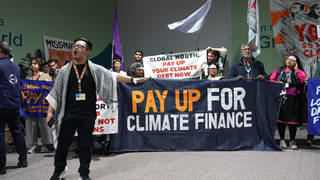
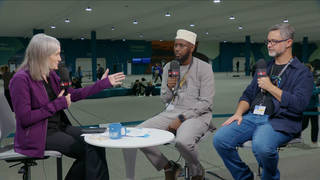
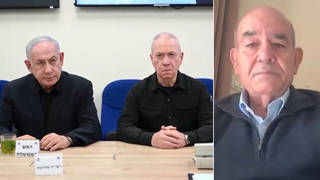
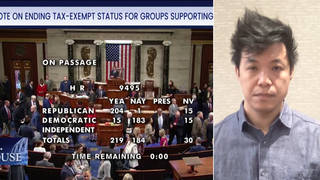
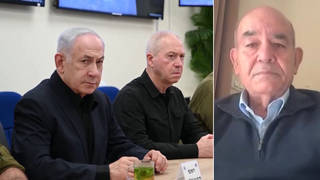




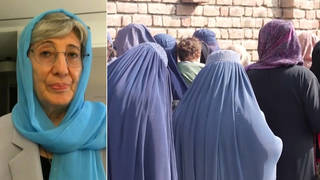
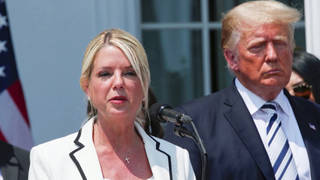
Media Options